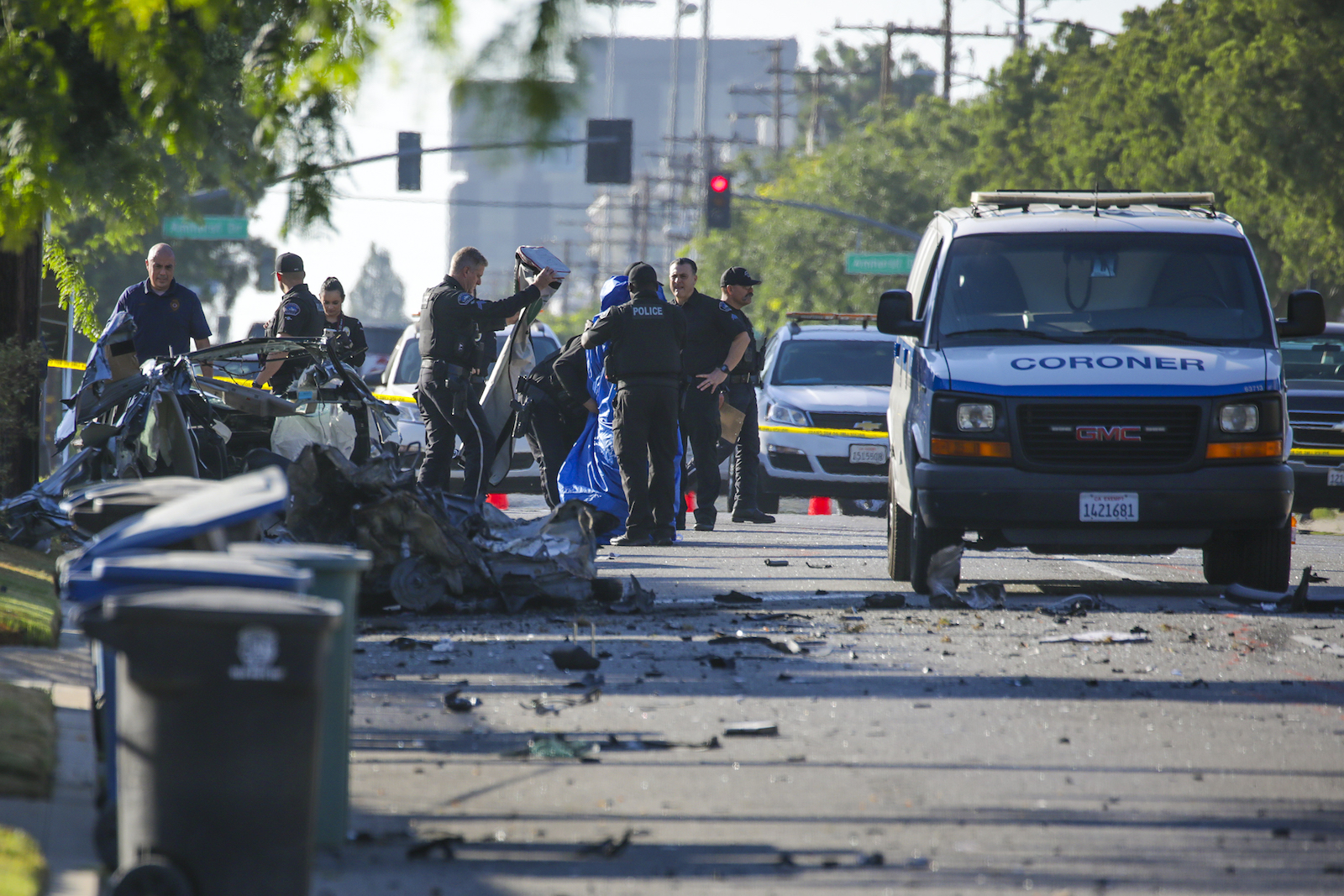Winter storm Uri notoriously demonstrated the failure of many elements of American infrastructure: Texas’ electrical grid collapsed, water treatment systems went offline, and oil refineries released millions of pounds of excess pollution. Less widely noticed, however, was the way the storm showed how deadly America’s reliance on automotive transportation has become.
On February 11, two days before the storm fully formed, freezing rain descended upon Fort Worth, Texas, battering poorly maintained roads and slicking up highways. Interstate 35, a raised highway, took a special beating. In the early commuting hours of the morning, mayhem broke loose on the interstate as drivers lost control of their vehicles. In total, more than 130 vehicles, including more than a dozen semi-tractor-trailers, were involved in a crash — one of the largest in U.S. history. At least 65 people were treated for injuries, with six people ultimately dying.
New government data shows that February’s massive pile-up was part of a deadly trend. In the first six months of 2021, an estimated 20,160 people died in traffic crashes in the U.S., according to the U.S. Department of Transportation’s National Highway Traffic Safety Administration. That’s the highest number of deaths for that six-month period since 2006, and the total is 18.4 percent higher than it was during the first half of 2020 — which ended up being the deadliest year for traffic crashes since 2007. That percentage jump represents the biggest increase in road deaths in the first half of the year since the Department of Transportation began recording fatal crash data more than 45 years ago. In other words, 2021 is shaping up to be a uniquely deadly year.
Source: National Highway Traffic Safety Administration Clayton Aldern / Grist
Transportation and public health experts contend that the sharp rise is a product of both behaviors changed by the COVID-19 pandemic — namely higher rates of speeding, driving under the influence, and traveling without a seatbelt — and also shortcomings in the country’s transportation infrastructure and priorities. U.S. Transportation Secretary Pete Buttigieg has gone as far as calling the spate of traffic deaths a “crisis” and has vowed to release the first-ever governmental report and strategy on improving roadway safety early next year. The strategy, dubbed a “safe system approach,” will identify new safety approaches to roads, vehicles, speed, and post-crash medical care.
“No one will accomplish this alone,” Buttigieg said in a statement following the new data’s release. “It will take all levels of government, industries, advocates, engineers, and communities across the country working together.”
But some advocates say that a broader reprioritization is needed.
“There’s a fundamental problem that exists, because federal transportation funds have focused on making sure that driving is the easiest way for people to get around,” Madeline Brozen, assistant director of both the UCLA Institute of Transportation Studies and the Lewis Center for Regional Policy Studies, told Grist. “It has huge negative health consequences in terms of environmental justice, but it also has these huge health and safety consequences for drivers and pedestrians.”
Brozen believes that the government should be taking a two-pronged approach: trying to make cars and trucks safer while also incentivizing people to move toward mass transit options. The government’s current approach makes that difficult, she says. Since 1982, starting with an agreement signed by former President Ronald Reagan, major federal transportation spending has broken down according to a lopsided ratio: 80 percent of spending has gone to highways and private transportation, and just 20 percent has gone to public transportation.
“The way that the funds have been distributed makes it so that there’s not enough funds to prioritize and invest in high-quality transportation and public transportation that really elicit the frequency that people need to make it work for their lives,” Brozen said.
Making mass transit options more readily accessible could play a major role in efforts to stem climate change. A single person who switches from a 20-mile commute (roughly the U.S. average) to a bus or train ride can reduce their annual CO2 emissions by 20 pounds per day, or more than 22 metric tons in a year. In its diminished and relatively under-funded form, U.S. public transportation already prevents 37 million metric tons of carbon dioxide emissions annually — the equivalent of the emissions from 4.9 million households, or every household in New York City, Atlanta, Denver, Los Angeles, and Washington, D.C., combined.
However, mass transit in the U.S. has recently lost ground: National public transportation ridership dropped by as much as 80 percent last year and is still roughly 55 percent below pre-pandemic levels.
Bolstering ridership and prioritizing mass transit options could have tremendous consequences for both the climate and individual lives — it could also help curb a growing issue in America: car attacks. Research indicates that drivers’ implicit biases and racism lead to pedestrians of color being more likely to be struck by vehicles. Now, some of that violence is becoming intentional. Since the murder of George Floyd at the hands of Minneapolis police last year, car attacks in the U.S. have accelerated. A recent Boston Globe analysis documented at least 139 car attacks across the country in the last 16 months, leading to more than 100 injuries and at least three deaths. In Alabama, car attacks have targeted striking coal miners.
According to an analysis of federal data by the American Public Transportation Association, or APTA, public transportation is ten times safer per mile than traveling by car.
“People that are walking and driving in cities and towns across the country are really at risk,” Brozen said. “But with the right federal investments in transit operations, we can make our cities safer and more healthy.”



